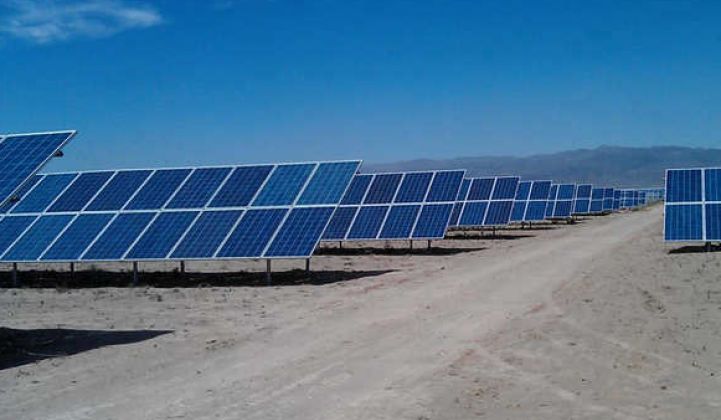China is a difficult solar market to track from the outside. Government subsidies are opaque and bureaucratic, interconnection problems run rampant, and non-Chinese businesses often have a hard time getting into the country.
There's no doubt that the Chinese PV market is growing at unprecedented speed. But determining its overall health is more of an art than a science.
So perhaps the scientists can help.
NASA recently published a fresh batch of satellite images of China's utility-scale solar boom in Gansu province. While they don't tell us much about market conditions on the ground, they do illustrate the boom underway in the country.
With ample sunshine and a wide-open desert, Gansu is ideal for PV project development. Last year, more than 5 gigawatts of projects were installed in the province, making it a leader.
Below are two satellite images showing the expansion of PV in the Gobi Desert between 2012 and May of 2015.
NASA describes the pictures: "The Advanced Land Imager (ALI) on the Earth Observing-1 satellite acquired these images of the solar farms, located on the outskirts of Dunhuang in northwestern China’s Gansu Province. In 2012 (top image), grids of photovoltaic panels are visible on land that was essentially bare in an image from October 2006."

Source: NASA's Jesse Allen
Driven by ambitious targets and a growing demand for power, China's solar boom isn't going to stop. According to GTM Research's new global demand report, China could be installing 24 gigawatts of solar PV yearly by 2020.
Listen to GTM Research's Adam James talk about how China fits into the global solar demand picture on the Energy Gang podcast:



